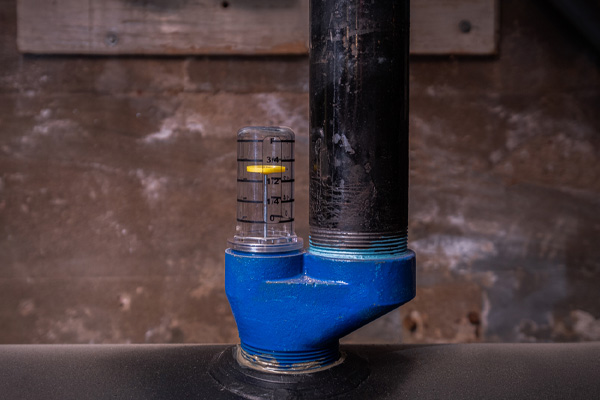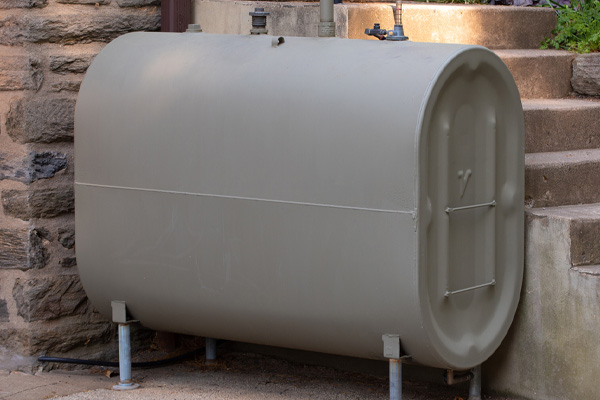
Homes equipped with heating oil systems are ready to take on the winter. The fuel is stored in a heating oil tank on your property, so your system doesn’t rely on an outside supplier. You do not have to worry about supply interruptions like natural gas users have to. You do, however, need to make sure that your oil tank is big enough oil tank for your home’s heating needs. Furthermore, you should also habitually check your oil tank’s fuel levels, using the heating oil tank gauge. This assists you in scheduling heating oil deliveries with enough time before running out.
The Basics of An Oil Tank’s Float Gauge
Table of Contents
The design of oil tanks has remained nearly the same for the last hundred years. This is because it is a simple yet effective one. The tank’s main body is typically made of welded steel with rounded edges. It has a fill pipe where more oil can be added and a vent pipe where the air is released. A tank also has oil feed lines where oil travels from the tank to the burner. Lastly, it has a float gauge with a hinged arm below, with the end floating on the oil surface. The arm lowers as oil is consumed, moving the gauge indicator disc with it.
Finding the Oil Tank on the Property
If you bought your home recently, find the oil tank in your property to do an oil tank gauge reading. This can be an easy task if the tank is aboveground. However, the tank may also be hidden in the basement, or the home may be equipped with an underground oil tank. The external pipes and float gauge should still be accessible. The standard size of tanks is 275 gallons. However, they aren’t filled to the brim for safety reasons. They typically are only filled with 225 to 250 gallons of oil, with the rest of the space occupied by air. This way, the heating oil can expand without issues.
Related Article: How To Estimate How Much Heating Oil You Use Per Day
Reading the Oil Tank Float Gauge

Once you find the oil tank, check the gauge on top. It is a clear cylindrical mechanism with an indicator disc. The markings on it are usually F (Full), 3/4, 1/2, 1/4, and E (Empty). Check where the disc is pointing to determine the level of oil in your tank. It may be confusing to people who are encountering this for the first time. They may not know whether to follow the bottom or top of the disc. It doesn’t matter as the gauge is not precise. All you need to do is check where the middle of the disc is when it comes to the markings.
Calculating the Remaining Fuel In Your Heating Oil Tank

Once you have the estimated fuel level in your tank, you need to compute how many gallons are left. This is typically done using a simple formula. Check the size of the tank to know its capacity. For example, many homes have a 274-gallon tank. It cannot be fully filled, so it typically only has 240 gallons of heating oil, and the rest is filled with air. Therefore, a float gauge pointing to 1/4 only has a remaining 60 gallons of oil (240 x 0.25). This can last a few weeks, but it is still best to order a refill immediately instead of waiting for the tank to become empty. A good rule is to call for heating oil delivery when your tank is around 30% full.
Related Article: The Best Ways To Prevent Running Out Of Heating Fuel This Winter
Checking for Oil Tank Gauge Failure
The float gauge can only give you an approximation of the current fuel level. It may sometimes not provide a good estimate due to float mechanism failure. A way to check is to remove the outer case and force the float down. The float should bounce back on its own once it is released. If it doesn’t, you likely have a broken float that needs to be checked by a professional. This situation can be because of wear and tear in older tanks. The arm below it may have also rotated and stuck against the tank’s side. Lastly, floats may become covered in thick sludge. This can weigh them down, hindering them from working as they should.
Overcoming a Broken Oil Tank Gauge
If the tank has a broken gauge, you may use other ways to measure your fuel level. This includes tanks that weren’t equipped with float gauges at the onset. You can manually measure it using a long, thin stick that can fit through the hole. It should be long enough to cover the tank’s height. After an oil refill, dip the stick to check where the top of the fuel is when the tank is full and mark it. Use the same stick to check how far the fuel level has gone down after some time passes.
Typical Heating Oil Tank Duration
A full heating oil tank typically lasts for some time. Exactly how long it will last depends on factors such as the home size, tank size, interior temperature settings, insulation level, frequency of use, heating system efficiency, and regional weather.
Most homes only use heating oil to warm specific areas, while some are for complete home heating. Homeowners can keep track of their fuel consumption every year, so they have a good idea of their yearly heating oil needs.
Related Article: What Happens When The Furnace Runs Out Of Oil?
Conclusion
New Jersey can experience harsh winters. Ensure your home doesn’t run low on heating oil this cold season. Check the float gauge to know how much fuel your tank has, and book a heating oil delivery immediately if the level drops below a third of your tank’s capacity. This way, your home has constant heating, and you remain warm and comfortable during the coldest time of the year.
Call Skylands Energy Service For Reliable Oil Deliveries
 Skylands Energy Service offers reliable and affordable heating oil delivery services throughout Central New Jersey. We have many delivery plans and financing options available to meet your needs.
Skylands Energy Service offers reliable and affordable heating oil delivery services throughout Central New Jersey. We have many delivery plans and financing options available to meet your needs.
Likewise, our family-owned company has many different types of home comfort services. This includes heating oil delivery, on/off-road diesel delivery, plumbing services, heater repair, heating system maintenance, heater installations, and more. Be sure to give Skylands Energy Service a call today to see what we can do for you. All of our services come with a guarantee to ensure your satisfaction. Call now! Click the link to view our service area.
Contact us now at (908) 707-1776 to find out more!

